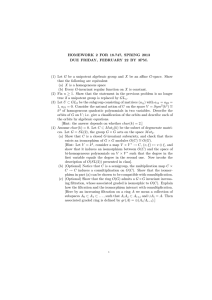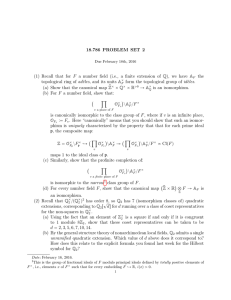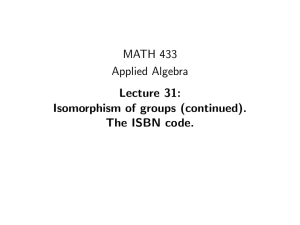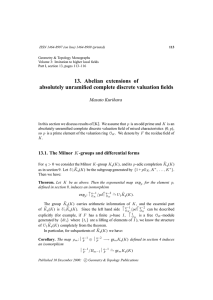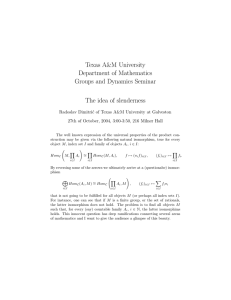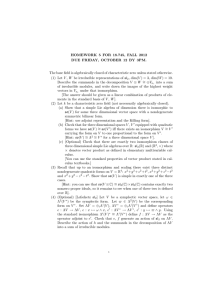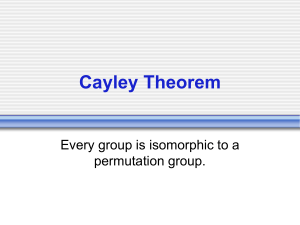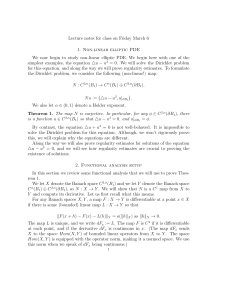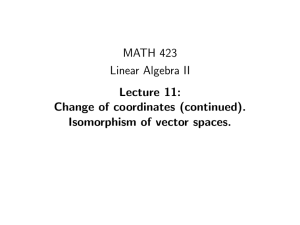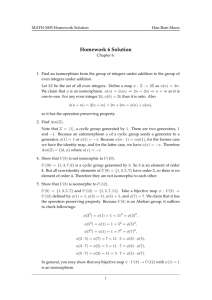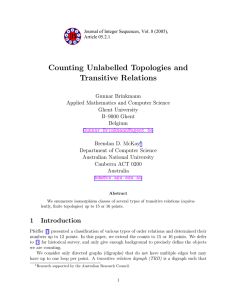Suppose F and F are fields and is an isomorphism between them:
advertisement
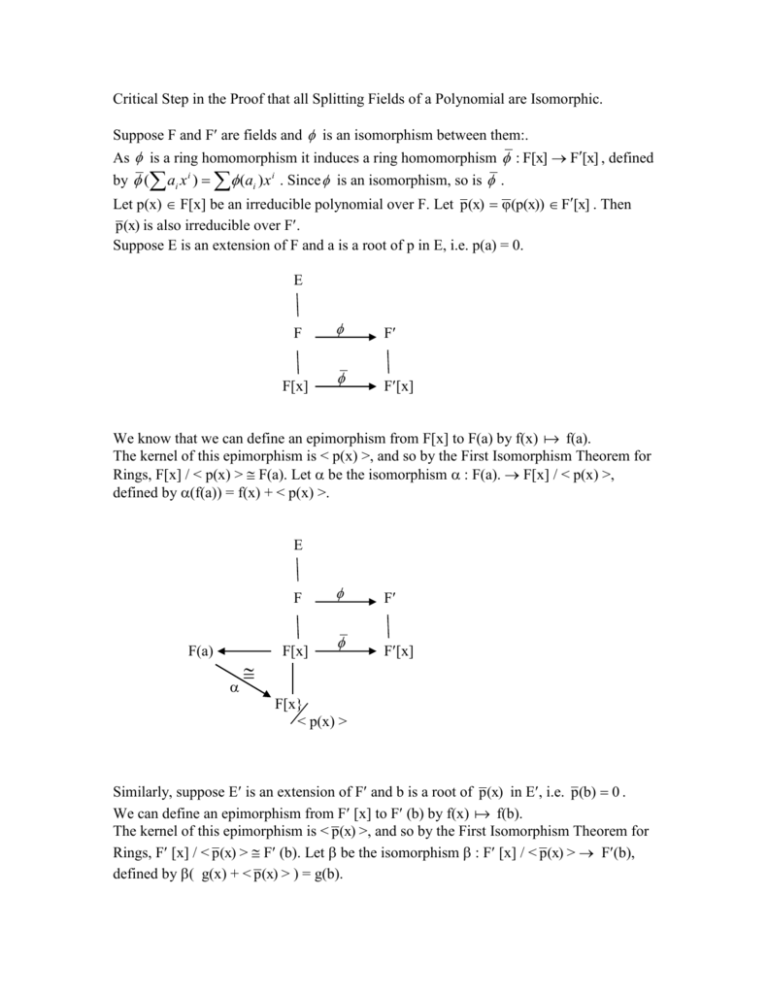
Critical Step in the Proof that all Splitting Fields of a Polynomial are Isomorphic. Suppose F and F are fields and is an isomorphism between them:. As is a ring homomorphism it induces a ring homomorphism : F[x] F[x] , defined by ( ai x i ) (ai ) x i . Since is an isomorphism, so is . Let p(x) F[x] be an irreducible polynomial over F. Let p(x) φ(p(x)) F[x] . Then p (x) is also irreducible over F. Suppose E is an extension of F and a is a root of p in E, i.e. p(a) = 0. E F F[x] F F[x] We know that we can define an epimorphism from F[x] to F(a) by f(x) f(a). The kernel of this epimorphism is < p(x) >, and so by the First Isomorphism Theorem for Rings, F[x] / < p(x) > F(a). Let be the isomorphism : F(a). F[x] / < p(x) >, defined by (f(a)) = f(x) + < p(x) >. E F F(a) F[x] F F[x] F[x} < p(x) > Similarly, suppose E is an extension of F and b is a root of p (x) in E, i.e. p(b) 0 . We can define an epimorphism from F [x] to F (b) by f(x) f(b). The kernel of this epimorphism is < p (x) >, and so by the First Isomorphism Theorem for Rings, F [x] / < p (x) > F (b). Let be the isomorphism : F [x] / < p (x) > F(b), defined by ( g(x) + < p (x) > ) = g(b). E F F(a) F[x] E F F[x] F(b) F[x} < p(x) > F[x] < p (x) > Just as the isomorphism induces the isomorphism , induces an isomorphism between F[x] / < p(x) > and F[x] / < p (x) >, defined by ( f(x) + < p(x) > ) = (f(x)) + < p(x) >. E F F(a) F[x] E F[x} < p(x) > F F[x] F(b) F[x] < p (x) > Let be the composition of the three isomorphisms , , and : = . Thus is an isomorphism from F(a) to F(b). E F F(a) F[x] E F[x} < p(x) > F F[x] F(b) F[x] < p (x) > Suppose f(x) is any polynomial in F[x] . Let’s compute ( f(a) ). From the definitions of , , and , we get: () ( f(a) ) = ( ( (f(a))) = ( (f(x) + < p(x) >) ) = ( (f(x)) + < p (x) >) = ( f) (b). Suppose f(x) = x. Then f(a) = a, and since (f(x) ) = x, ( f) (b) = b. Therefore (a) = (f(a)) = (by () ) ( f) (b) = b. So maps a into b. Next let c be an arbitrary element of F, and suppose g(x) F[x] is the constant polynomial g(x) = c. Then g(a) = c and (g(x) ) = (c), so ( g) (b) = (c) also. Therefore (c) = (g(a)) = (by () ) ( g) (b) = (c). Hence acts the same as on all elements of F; F = .
